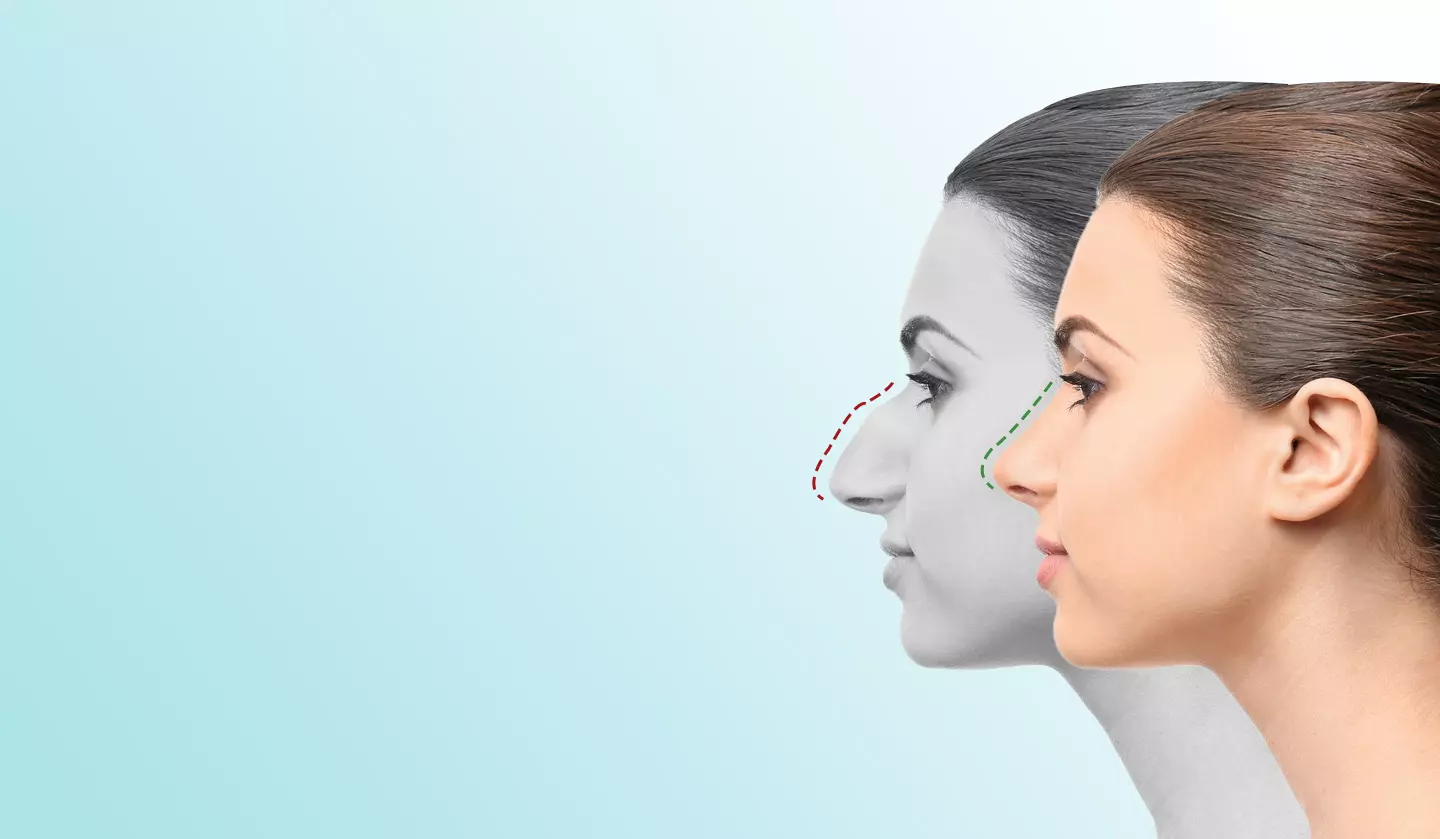
Nose is an important part of your face and having a good nose can really help you in terms of attractiveness and self-esteem but not all noses are perfect and there can be several types of deformity which changes the shape of this important part of the body
A common one of these deformities is Pollybeak deformity and it’s a result of the supratip of the nose comes before the nasal tip because of the supratip having more tissue and as a result it creates a nose that resembles a parrot’s beak.
Supratip deformity is very common and is usually the result of a faulty nose job and studies show that this happens for about 40% to 64% of patients which they need to do another nose surgery to fix the problem.
As said before pollybeak deformity can happen mostly because of a nose job going wrong and many complications can happen which can lead to this such as:

This happens when the surgeon decreases the size of a dorsal or as some call it nasal hump, aggressively without redraping the skin properly and then this skin might stay stretched out and as a result can develop more scars in the supratip area.
And on the opposite side, some surgeons might not decrease the size of a dorsal hump enough and as a result it can make the skin thick in the supratip regions.
Read More : Rhinoplasty in Iran
Many people might decide to undergo a nose job in order to fix their tension tip which is when the tip of the nose is large and points downwards, but many patients that undergo a nose job for this problem have a large dorsal hump which if is removed by the surgeon without addressing the strong nasal tip cartridges will lead to large supratip area which is the pollybeak deformity.
A pollybeak deformity can also be the result from a previous surgery and if the overlying skin doesn’t reoppose the underlying tip cartridges properly will allow the scar tissue to develop in the area, when this is realized early it can be treated with a steroid injection to help soften the scar otherwise if the scar matures the patient will have to undergo a revision surgery in order for the surgeons to remove the scar tissue.
Another problem occurs when during the healing process the nasal tip doesn’t have enough remaining support so the nasal part becomes droopy and as the nasal tip lowers it then becomes the highest point of the profile line.
Read More: Open vs Closed Rhinoplasty
Supratip deformity can have two main types, Cartilaginous Pollybeak and Soft Tissue Pollybeak
A cartilaginous pollybeak deformity may happen if the surgeon under-resecting the cartilage in the nose bridge and over-resecting the nasal bones and the lower lateral cartilages and as a result these may lead to lack of support in the tip cartilages which leads to pollybeak deformity.
This type of supratip deformity generally happens if the surgeon doesn’t redrape the skin properly in the nasal bridge regions which leads to excess scar tissue and thick skin in supratip area.

The most common and best treat for pollybeak deformity is a revision surgery which is commonly known as revision rhinoplasty but if the deformity isn’t severe there is another treatment which is done by steroid injections or dermal fillers.
An effective and common way to treat deformities such as a pollybeak deformity is to undergo a rhinoplasty surgery as it is an effective and permeant solution to this problem.
Revision rhinoplasty is a surgery which is done mostly to fix the complications which has occurred due to a prior nose surgery but it can be performed to fix various deformities such as pollybeak deformity to fix them permanently.
If the deformity isn’t severe or the patient is in the early stages of it then steroid injections or dermal fillers may be a good solution, steroid injection can reduce the swelling and scars in the nose but shouldn’t be used more than once every 3 to 4 weeks because it can increase the deformity even more but the result isn’t permanent like revision surgery and only lasts from six months to a year.
The risks and complications of this surgery is higher for people who have gone through a nose job before but it still can happen to other patients who have not gone through any nose surgery before as well, many problems and complications can happen such as:
· The pollybeak deformity not being treated
· Scarring in both interior and exterior of the nose
· Problems with breathing
· Blood supplying issues
· Damage cartilage or bone
· Bleeding, swelling, bruises and pain
· Infection
· Negative reactions to anesthesia
· Not perfect results regarding aesthetics

The treatments that you will get by fixing a pollybeak deformation using a revision surgery are as such:
The treatment of a pollybeak deformity can result in the nose being in a more natural shape and can have a huge impact in the beauty of your face.
The supratip deformation being fixed can result in overall better functionality of your nose and can prevent problems such as nasal obstruction.
People who are not satisfied with the look of their nose can have problems with self-esteem or anxiety and depression but fixing a problem such as pollybeak deformation can greatly help with the overall well-being and happiness of these people.
In some people pollybeak deformity can cause problems with breathing by blocking the nasal passages which can be fixed by treating the deformity.
The pollybeak deformity can really change the shape of your face so it’s best to fix it and gain its benefits from the aesthetics to the breathing improvement and helping with your overall well-being and happiness, you can follow Ermateb for more information regarding revision rhinoplasty or getting in contact with the best doctors to go through the surgery yourself.

